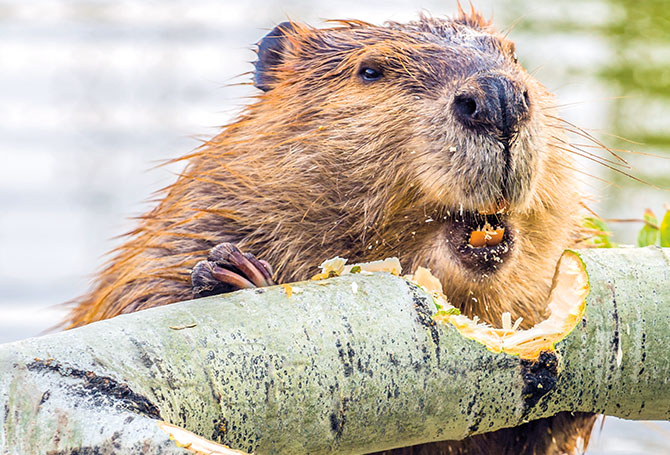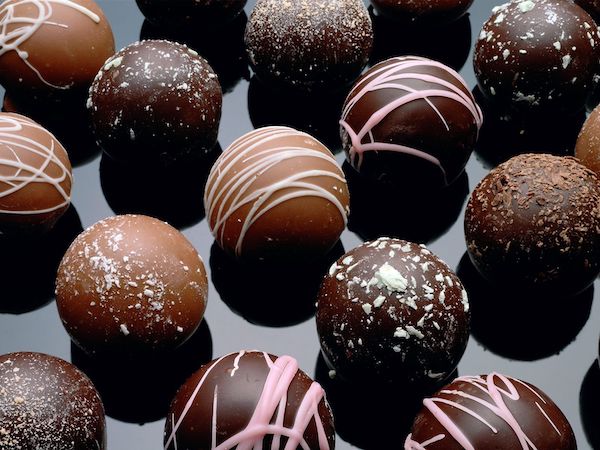
Let’s pretend that you and a friend are trying a bunch of mixed chocolates. Sometimes you might like one and sometimes you don’t. The coconut caramel was good. The peanut whatever was NOT. While you try each one, your friend asks: “how does it taste?” It may seem an easy question to answer, even simple: you pop the candy in your mouth, chew a bit, and it tastes “good.” Or it may taste terrible – too salty, or too tangy, or too bitter for your liking. Maybe you prefer your chocolate to be sweeter or more savory or even spicy.
There are a lot of flavors going on with any good, high quality chocolate; flavors of cherry or vanilla or even smoke – sometimes so many subtle and remarkable flavors that all you can REALLY say is wow, this chocolate is amazing.
Your taste buds did NOT provide all that information. They didn’t even give you HALF of it.
How we perceive the flavor of chocolate – the flavor of everything we eat, really – is a LOT more complex and fascinating a process than “my tongue told me it was yummy so I ate it.” Before we can start playing mad-scientists and creating our very own specialty chocolates, highlighting the flavors we like, diminishing those characteristics we don’t, we MUST grasp – at least on a basic level – how flavors are designed.
FLAVORS, REAL AND ARTIFICIAL
All the food flavors we love are nothing more than chemicals, molecular compounds arranged so our taste buds can “read” the taste while our nose “reads” the aroma, then sending what they’ve “read” to the Gustatory Cortex, where our brain interprets the information as “this thing we are eating right now is delicious.”
The easiest way to gain an introductory understanding of the complicated world of Flavor is to look at a few examples. We’re going to check out three: vanilla, cherry, and cinnamon.
Vanilla

Vanilla comes from the beans that grow on wild Vanilla planifolia orchids in tropical rainforests. Since the vanilla orchid has to be hand-pollinated and hand-picked, real vanilla is REAL expensive. A single bean costs between $11- 15 dollars!
A vanilla milkshake that only costs a few bucks can’t have very much real vanilla in it. So the question is obvious: if it doesn’t have vanilla in it, what DOES it have?
There is an entire class of highly trained chemical engineers called flavor chemists or simply flavorists. Their job is to analyze the chemical structure of a particular flavor and manufacture an imitation that will tastes pretty close to the original since it is SHAPED pretty close to the original.

The active ingredient in vanilla which provides the “vanilla” flavor is called vanillin. There are many other flavor compounds at work too, providing depth of flavor and subtle notes. Flavorists don’t care too much about the subtle flavors… they’re just trying to recreate the MAIN TASTE that will trick your brain into thinking you are eating a vanilla cream pie when you are ACTUALLY eating a petroleum-based acid with spruce tree juice blended in.
The problem taste chemists have is this: while they can trick SOME of your taste buds fairly easily, most manufactured chemicals have a slightly bitter aftertaste – and the bitterness receptors on your tongue are VERY sensitive. To make matters worse for these food-fakers, the aromas that are produced by manufactured flavor compounds have a much harder time tricking your nose than they do bamboozling your taste buds. They’re working on the problem, experimenting with a wide range of natural and artificial sources to create better and better vanillin replacements.

Flavorists have made MANY varieties of artificial and manufactured vanilla flavorings and made them available for sale on grocery shelves. Most of what we think of as vanilla is nothing more than a blend of chemicals with a similar compound structure to vanillin. Even some of the bottles which claim to have be real vanilla extract are only PARTIALLY from the bean, the rest from the lab.


BEAVER VANILLA
There is a rumor going around that some artificial vanillin comes from the anal sac of beavers.
It’s true. Beaver butts secrete a goo called castoreum, which the animals use to mark their territory. The U.S. Food and Drug Administration lists castoreum as “generally regarded as safe” additive, and manufacturers have been using it extensively in perfumes and foods for at least 80 years.
Cherry

Let’s talk about where “cherry” flavor comes from.
Think about the last time you had a cherry snow cone. Been a while, hasn’t it? The super-sugary syrup they poured all over crushed ice and which turned your mouth bright red? There was absolutely NOTHING in that syrup even remotely related to an actual cherry.

The synthetic formula of cherry flavor was first published in 1917 and involved a whole chain of various chemicals:
- ethyl acetate — a type of chemical called an ester, with a fruity aroma and which is found, for example, in nail-polish remover;
- ethyl benzoate — a colorless liquid, an ester with an aroma similar to mint;
- apricot oil — squeezed from the cores of apricots or similar fruits;
- benzoic acid — a type of carbonic acid, which is also used as a preservative in various foods (in the list of ingredients it will be proudly named “E210”);
- glycerine – a sweetish liquid used in preparing low-calorie food;
- ethyl alcohol – just what it says.
Funny but true: even when flavor chemists TRIED to use actual cherries to make a cherry extract, they couldn’t. Turns out that cherry extract tastes really…. terrible. Fake is the only way to go.
Today the main component of cherry flavor substitutes, benzaldehyde, is a substance with a pleasant aroma of almonds.
Natural v. Artificial Flavors
The FDA broadly defines natural flavors to include any flavor isolated from natural sources like plant material (fruits, roots, bark, herbs, etc.) or animal products (meat, dairy, etc.). Artificial flavors are any flavors not defined as natural, even if they have the exact same chemical composition as flavors isolated directly from nature.
Cinnamon
In the 1950s, most of the cinnamon Americans consumed was the Saigon variety from Vietnam. Saigon cinnamon – the peeled and ground inner bark of an evergreen tree native to mainland Southeast Asia – has a rich and slightly spicy flavor thanks to high levels of essential oils and a flavonoid called cinnemaldehyde. When the U.S. government imposed a trade embargo on Vietnam beginning in 1964, Saigon cinnamon became almost impossible to import, and spice sellers were forced to find another way to fill American cupboards.

Flavorists found a cheap substitute in Indonesia – a variety called Korintje. It’s a distant botanical cousin to Saigon cinnamon, but it’s much more bitter and doesn’t have the same depth of flavor. Unground Saigon cinnamon bark looks like a flaky, dark-hued mulch. The rigid, pale sticks (or “quills”) common in that autumn potpourri sold at Publix? Korintje.

Today’s commercially available ground cinnamon – almost always the Indonesian Korintje variety – is often mixed with fillers. Scientists tested market forms and found that 70% of what is sold on US shelves wasn’t pure…. but was instead a blend of powdered beechnut husk, ground hazelnut or almond shell dust, dyed and sprayed with cinnamaldehyde and marketed as cinnamon.
In other words, that ground cinnamon you’ve been using? It is more than likely ground up nut trash, dyed red, doused with a chemical that tastes vaguely cinnamonlike, bottled and sold as the real thing.
FURTHER READING
Article: Where the flavor in food comes from.
Experiment
Experiment: Blind Evaluation of Real and Artificial Flavorants
Equipment
- 10 blindfolds, cups/lids for each ingredient, water, napkins, pencils/pens, copies of the flavor profile worksheet.
- 4- 5 flavored food items; blend of naturally and artificially flavored
Instructions
Preparation
- Divide samples into numbered, sealed plastic cups. Put cups into a paper bag so the taster can’t see what they will be tasting. Split participants into groups of two – one taster, one recorder. Distribute bags of samples, flavor profile sheets, and blindfolds to participants
Instructions for Participants
- “Today you will be doing a blind taste test of several different flavors, some real, some artificially created in a lab. Each taster will be blindfolded for the duration of the experiment; each recorder will be providing the taster with a small sample of each item then writing down their responses. Your goal is to correctly identify the flavor, classify it based on the questions in the Flavor Profile Sheet, and decide whether you think the flavor is real, imitation, or some combination of the two. “
- Tasters: “Use the water to cleanse your palate in between samples. When tasting each item, chew it without swallowing to distribute the flavor compound throughout your mouth, hold it on your tongue for a slow count of ten, then answer the questions.”
- Recorders: “Provide the taster with a sample without giving them any information about how it looks or what YOU think it is, wait for them to swallow, then ask each question and record their responses. Remind your taster that the ANALYSIS questions should be impartial, the LIKE/DISLIKE questions should be based on the taster’s opinion.”

